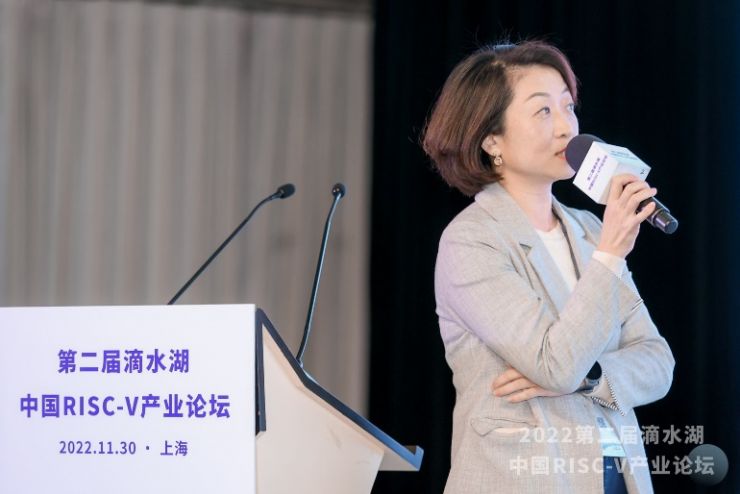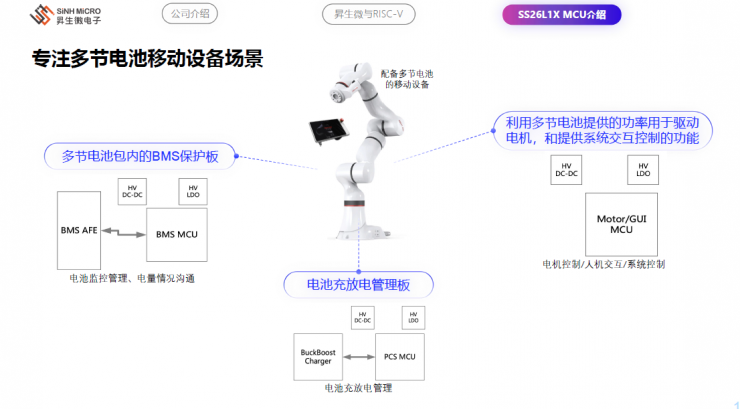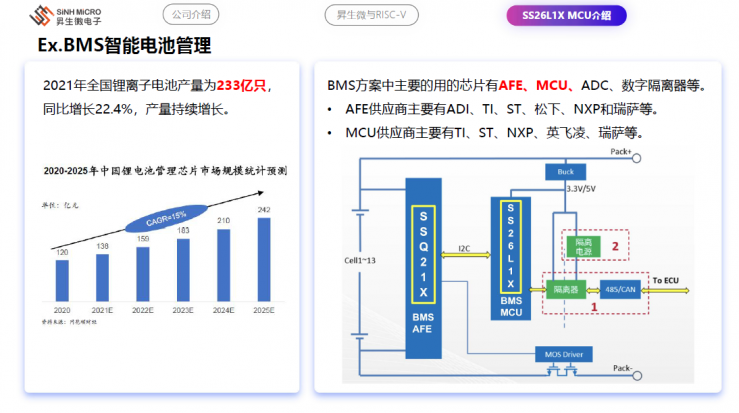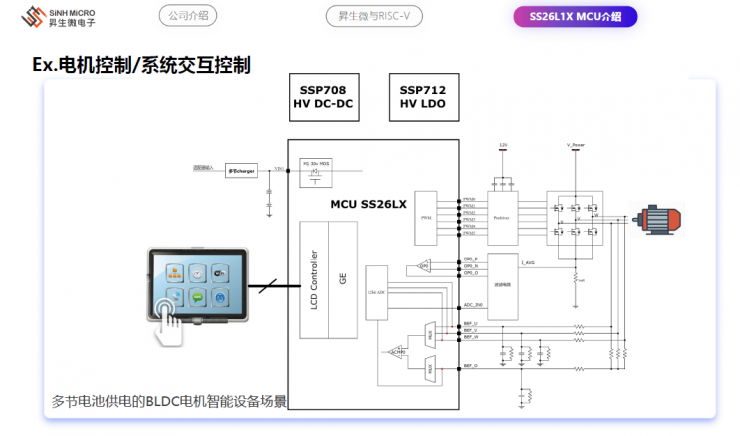Sinhmicro releases RISC-V MCU SS26L1X for multi cell mobile device scenarios
Although RISC-V has been very popular in recent years, the biggest challenge in the promotion process of chip products is the long-term dominance of ARM in the mobile device field and the cultivated user habits.
RISC-V has a relatively short history, and related compilers, development tools, software development environments (IDEs), and other ecological elements are still developing. Although having a complete set of open source and free compilers, development tools, and software development environments is a huge advantage of RISC-V, there is still a considerable gap compared to ARM's commercial compilers and IDEs. Terminal developers often require development tools to be the same as Arm, while underlying libraries and algorithm libraries need to be the same as Arm... because this makes it easier to replace.
However, due to current market integration, geopolitical priorities, and the surge in IoT terminals, RISC-V is being vigorously promoted for wider adoption. This is of great significance for RISC-V and also a good opportunity to promote architectural diversity once again after the disappearance of chip architecture diversity since the 1980s.
After weighing, we believe that RISC-V is a very good balance between ecological universality and domestic autonomy and controllability, so we firmly chose RISC-V. On November 30th, at the second China RISC-V Industry Forum hosted by the China RISC-V Industry Alliance and Xinyuan Microelectronics, Yang Xin, founder and CEO of Zhuhai Sinhmicro Co., Ltd., said. After weighing, we believe that RISC-V is a very good balance between ecological universality and domestic autonomy and controllability, so we firmly chose RISC-V. On November 30th, at the second China RISC-V Industry Forum hosted by the China RISC-V Industry Alliance and Xinyuan Microelectronics, Yang Xin, founder and CEO of Zhuhai Sinhmicro Co., Ltd., said.

RISC-V is a brand new ecosystem, what are the advantages of Sinhmicro that have decided to enter this field? Yangxin mainly has the following points:
1. AIoT multi application scenario solutions and development ecology. Focusing on AIoT multi application scenario solutions and development ecology, there is a strong demand for innovation, personalization, and customization, without any historical burden. It is lightweight and coincides with RISC-V.
2. Industry landing capability. Strong industry landing ability, first-class customer base, guidance, companionship, support, and habits in the process of customer product development.
3. CPU&OS&Architecture capabilities. An experienced CPU ecosystem research and development team, with members who have decades of experience in developing large-scale software and hardware such as MIPS, ARM64, Linux, Android, RTOS, etc., are proficient in simplicity and ease of use, and think what users want.
It is reported that the SS26L1X MCU released by Sinhmicro focuses on the scenario of multi battery mobile devices, which are usually composed of three major solutions.

1. BMS protection board inside multiple battery packs. The protection board mainly consists of a multi battery intelligent management simulation front-end AFE+BMS MCU, which manages battery monitoring and other algorithms.
2. Battery charging and discharging management board. Including some battery management or digital power related controls.
3. Utilize the power provided by multiple batteries to drive the motor and provide system interaction control functions. At this point, MCU has the ability to control motors, interact with humans, and manage systems.
Specific cases include industrial robots, electric vehicles, photovoltaic energy, intelligent furniture, electric tools, etc.
It is reported that the SS26L1X integrates high-voltage LDO, has a clear MCU storage architecture, complete system level control, and is equipped with rich interface functions, flexible configuration modes, and low-power options suitable for different application scenarios. This product is mainly used in BLDC/PMSM motor applications and IoT devices with displays, with high integration, reduced peripheral costs, superior overall performance, and flexible and convenient development.
The SS26L1X is equipped with a 32-bit RISC-V core, with a maximum main frequency of 96MHz. After optimization, 32-bit multiplication instructions can be executed within two cycles and 32-bit division can be executed within three clock cycles. Built in 28K bytes of RAM for data caching and support running code within it. The optional 256KB, 512KB, and up to 1M bytes of Code Flash support multiple code updates, and the built-in 4K byte CACHE ensures high efficiency in running code in Code Flash.
The SS26L1X integrates a 5V output LDO voltage regulator, supporting a maximum load capacity of 200mA. The VCC LDO outputs 3.3V through a controllable switch and is used for power supply to peripheral devices such as LCD backlight and BLE/Wi Fi modules.
In addition, the SS26L1X also includes a variety of peripherals, up to 39 bidirectional I/O ports, 12 bit 16 channel single ended/differential high-speed ADC, and a maximum sampling rate of 1.2Mbps. 3-way configurable NTC, 2-way analog comparator, and 3 OPAs.

Taking SS26L1X as an example when used on BMS solution boards, it can meet the system set requirements of intelligent battery boards. The extension of intelligent battery panels to the automotive field, with similar system architectures, only requires higher requirements for chip voltage resistance, reliability, and algorithm performance.
In terms of motor control/system interaction control, it can also be paired with the power management series chips SSP708 and SSP712 of Sinhmicro to supplement the high-voltage power management required for the system, providing a complete solution.

Yang Xin stated that the entire product package of Sinhmicro also includes its own SAND IDE, which supports full platform and full series chip compatibility. We have used the open-source VSCode Basic Edition for custom development, with the goal of meeting the needs of the current developer ecosystem for simplicity, efficiency, and development environments. We also provide development boards, debuggers, burners, as well as underlying functions, drivers, and more
This article is an original article from the EET Electronic Engineering Album. Please refer to the following link for the original article: https://www.eet-china.com/news/202211304747.html